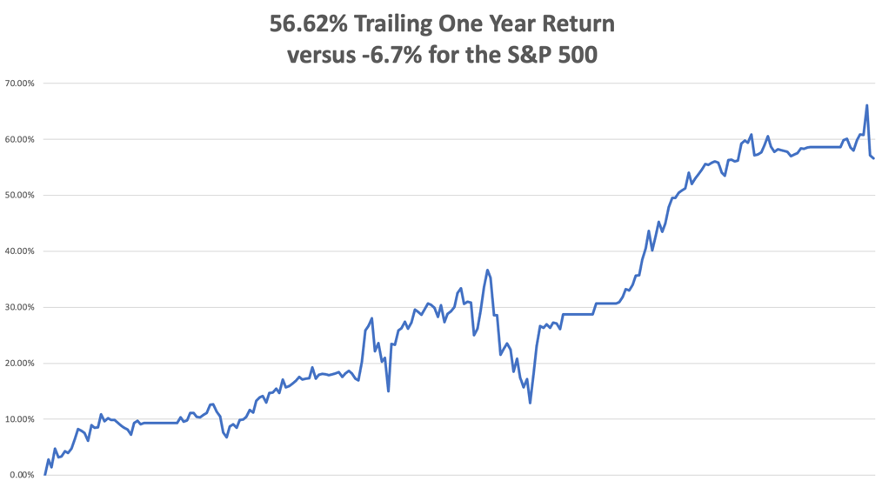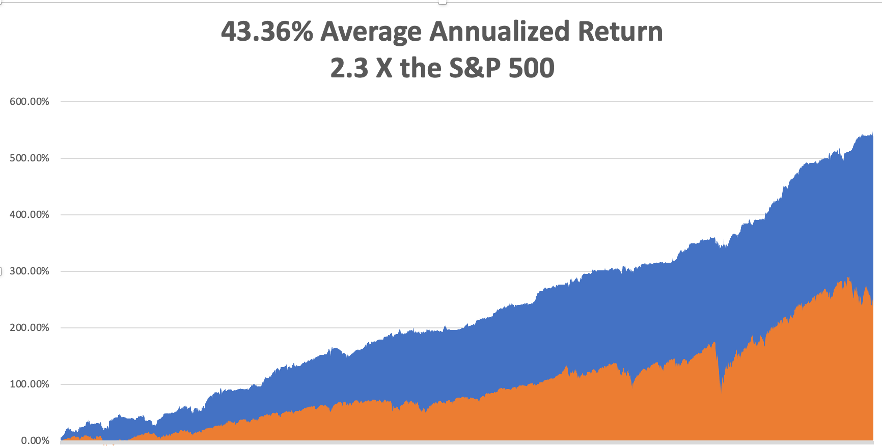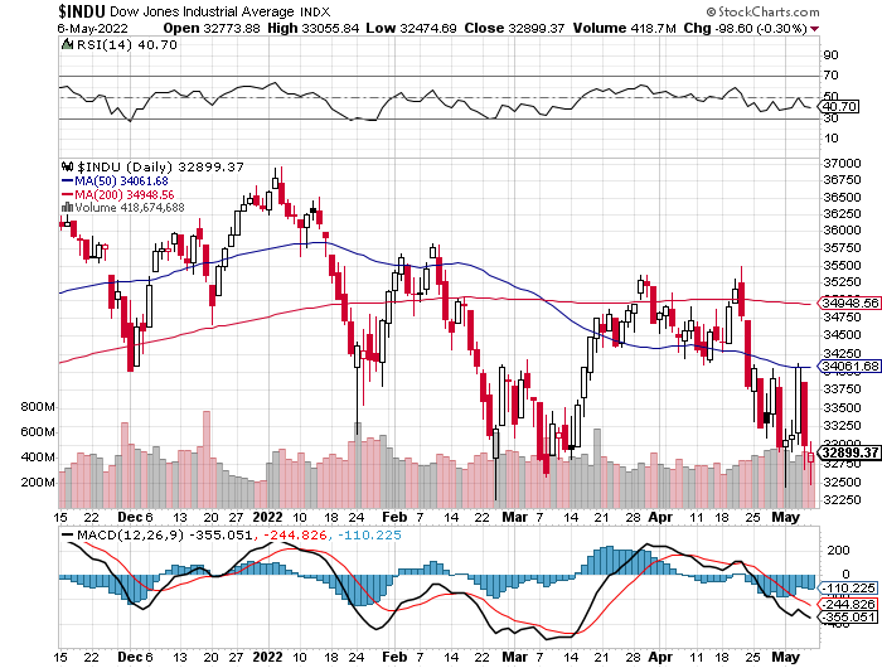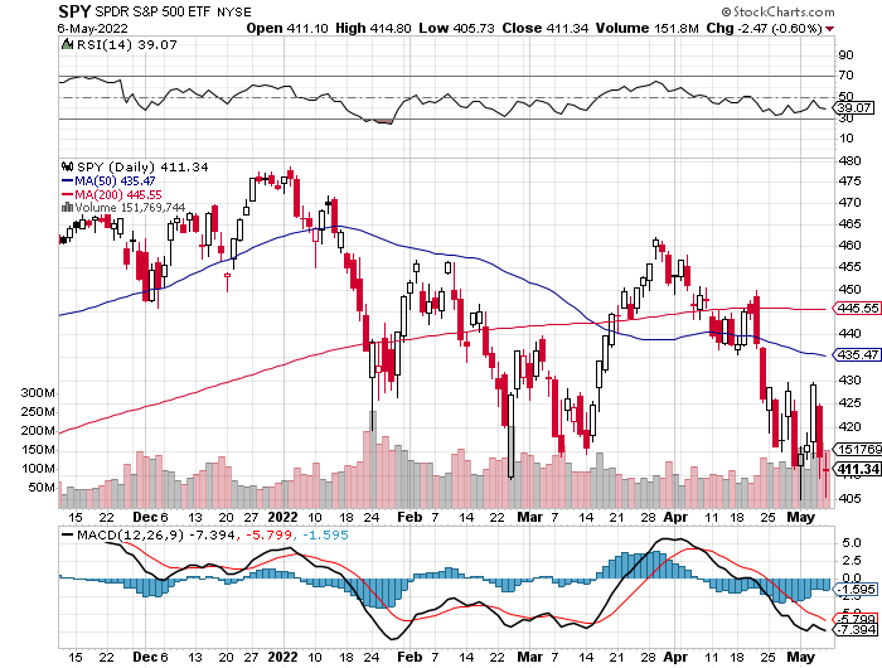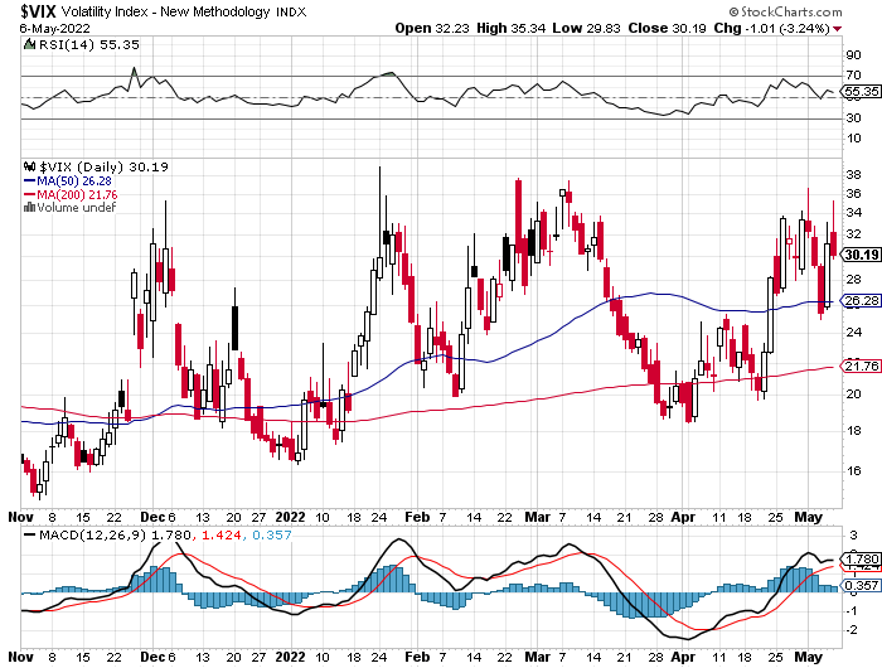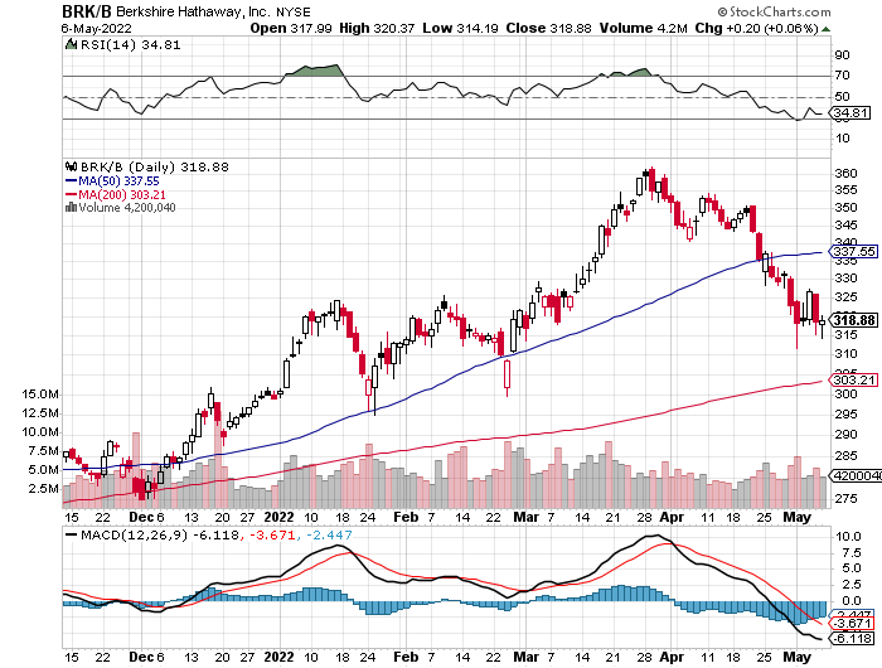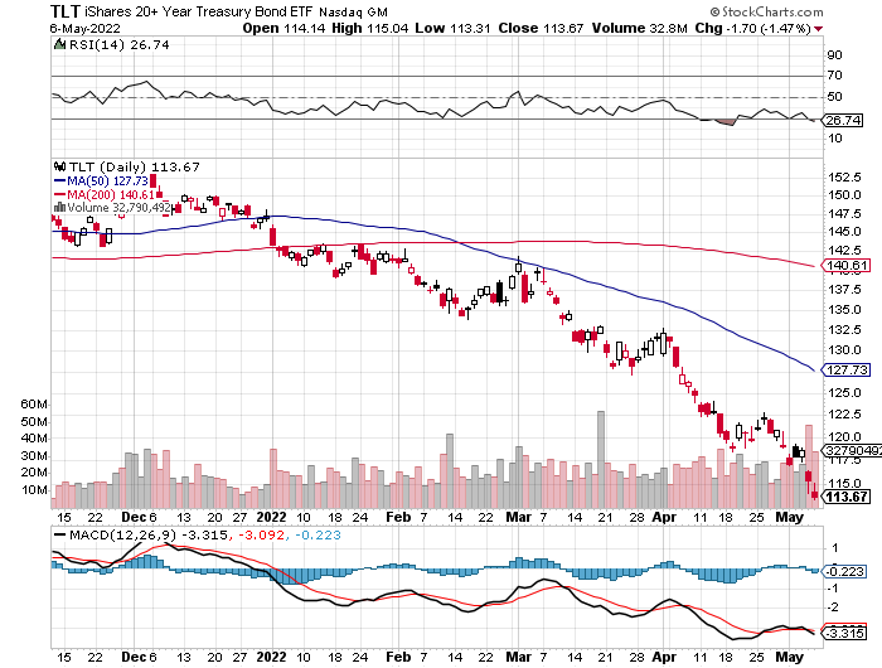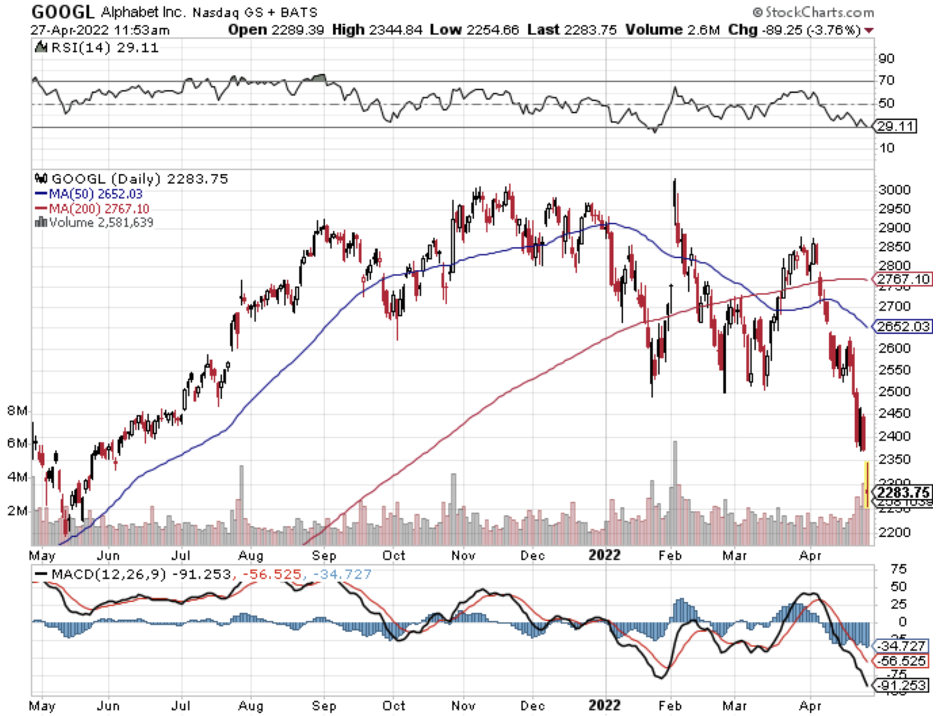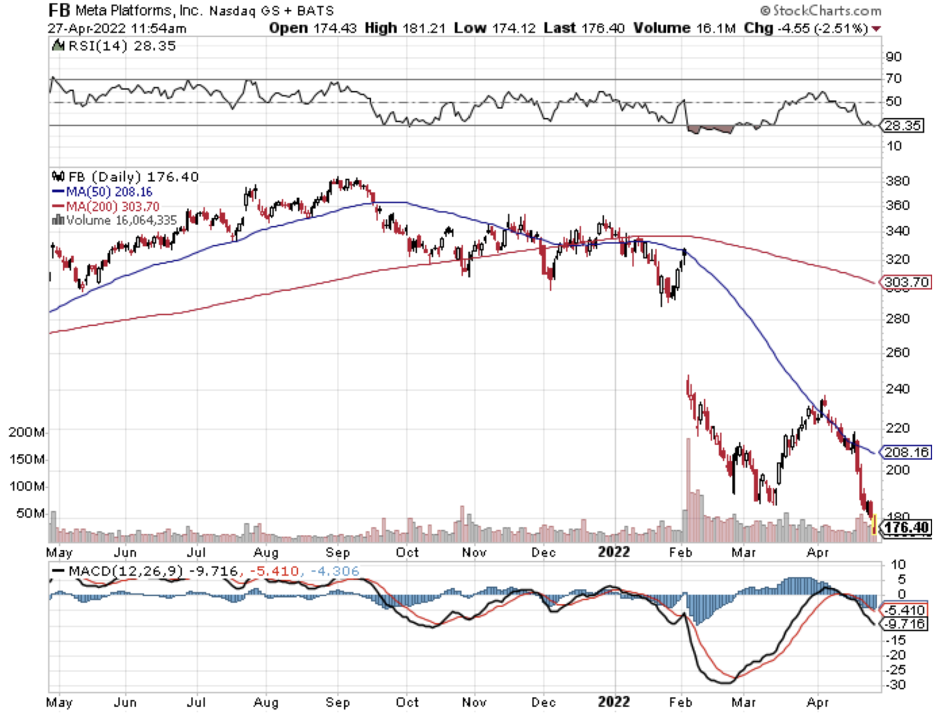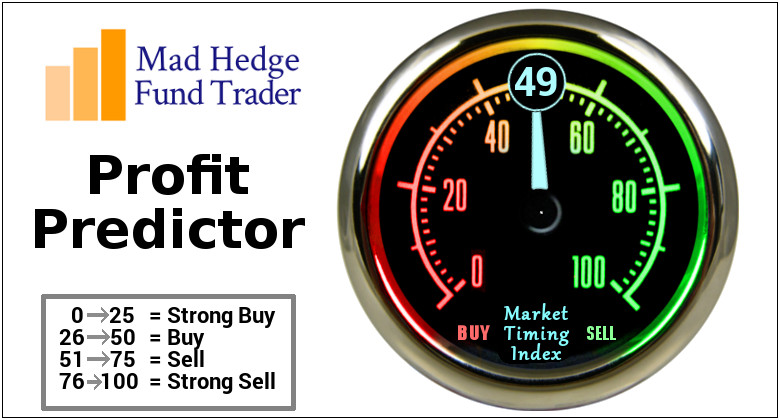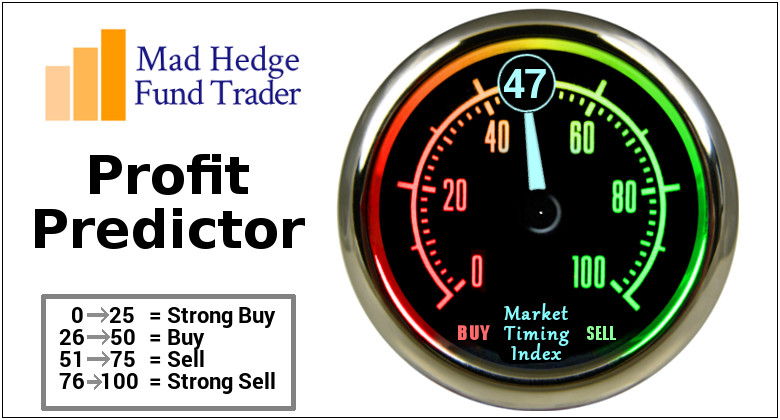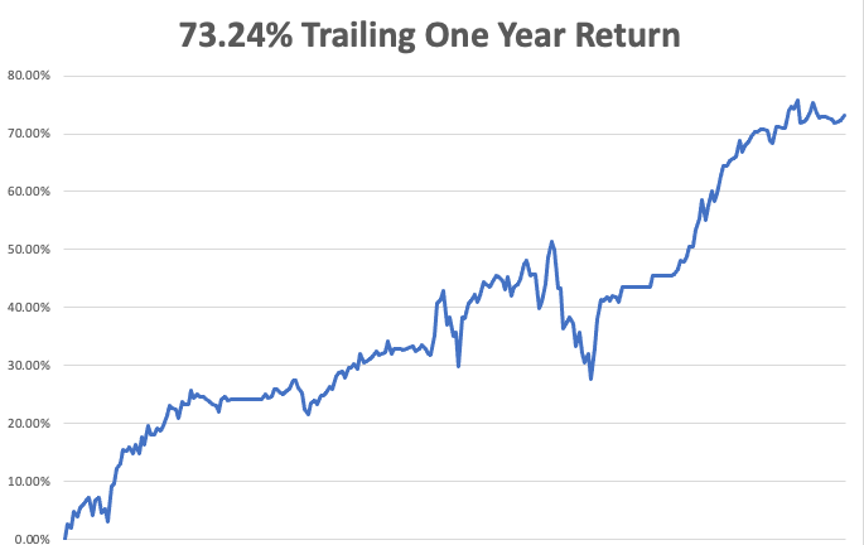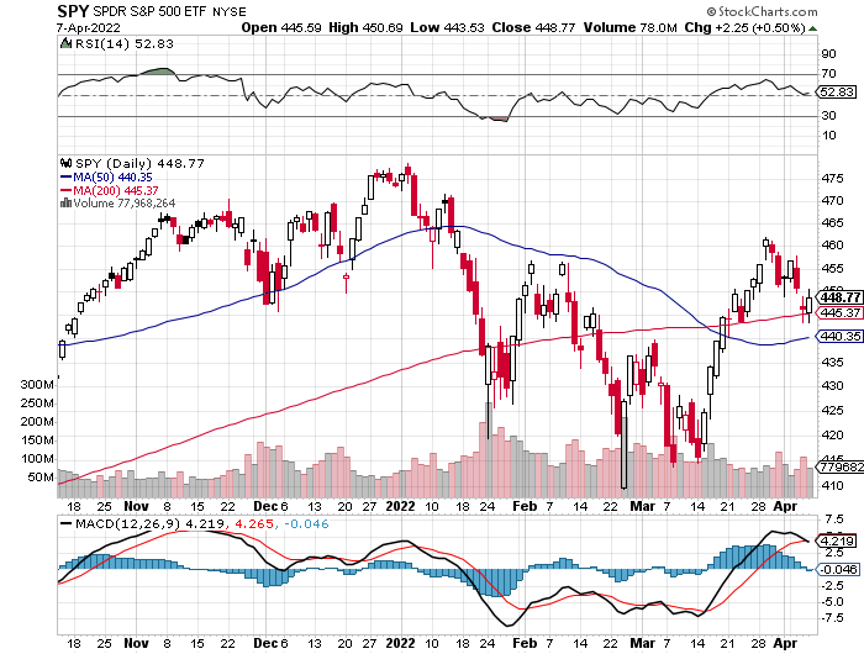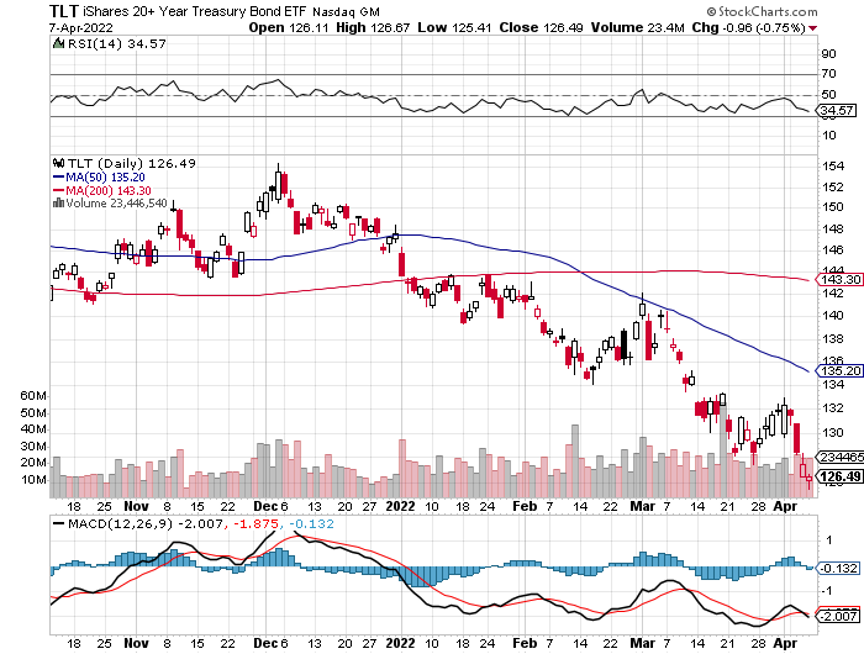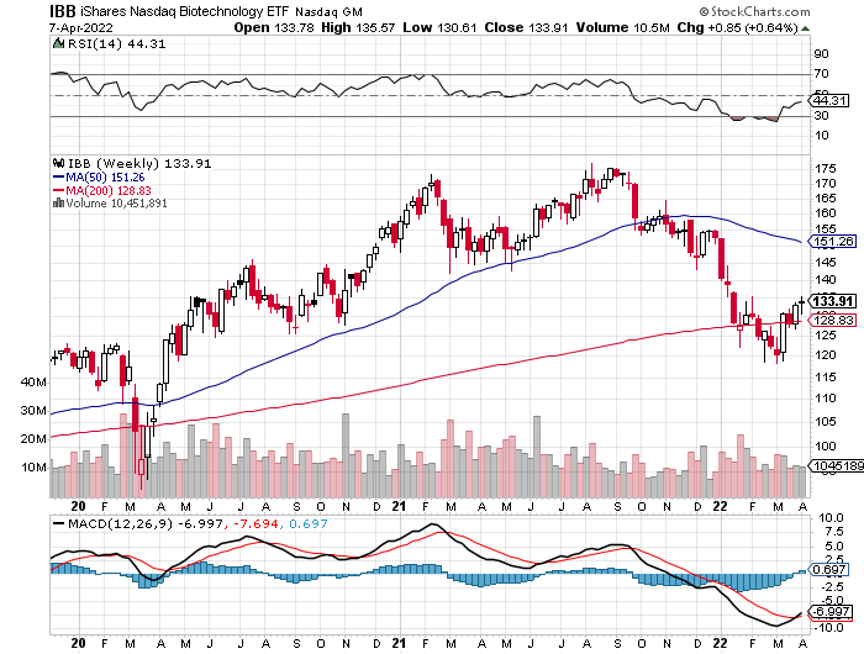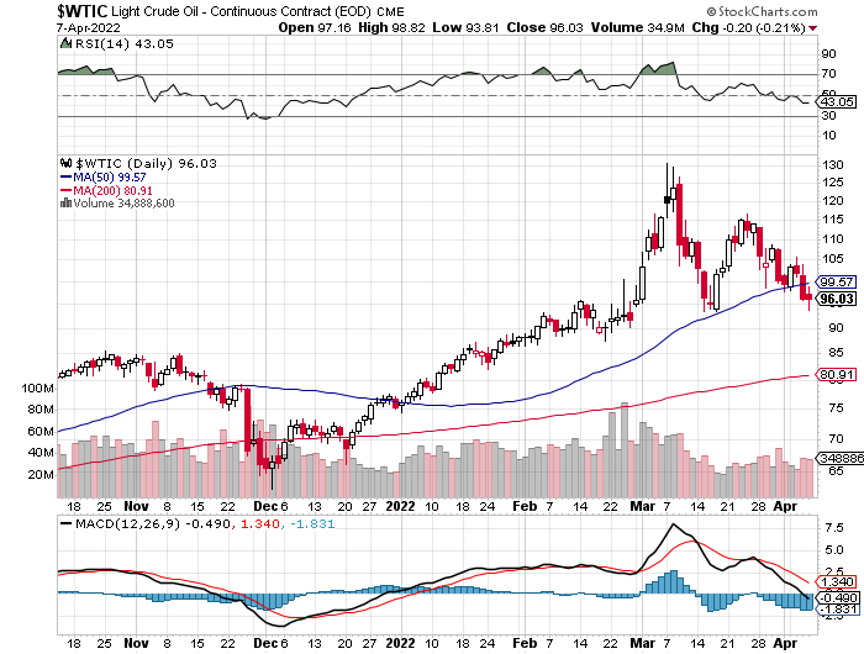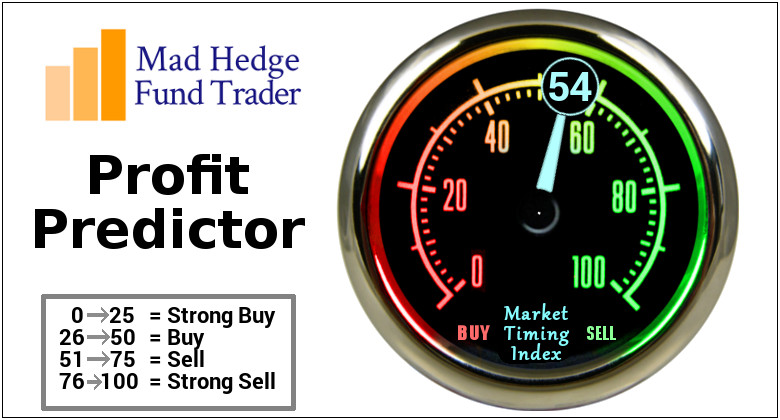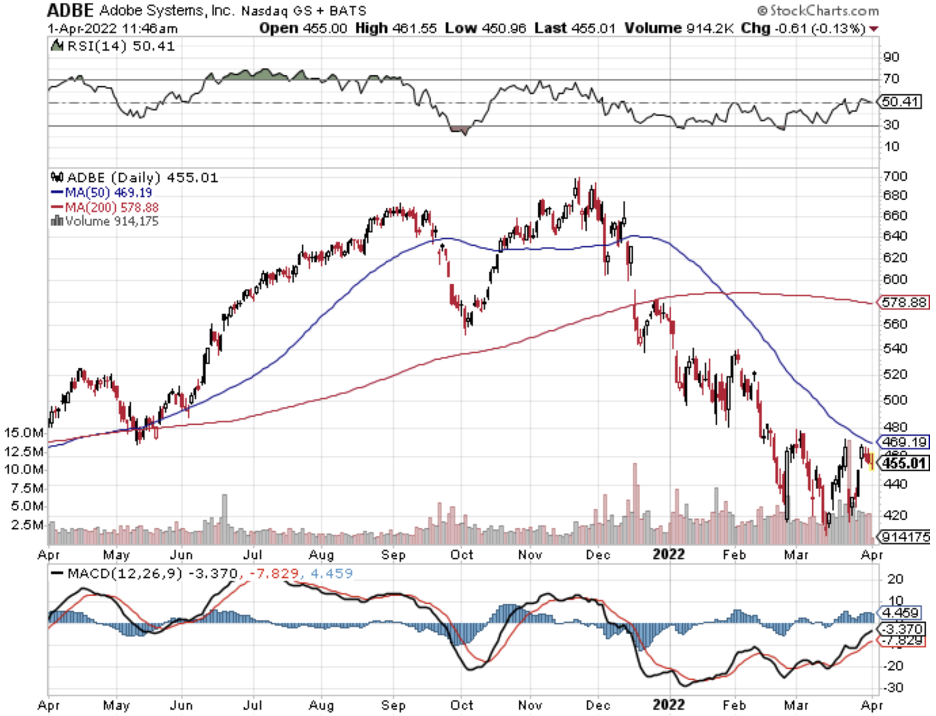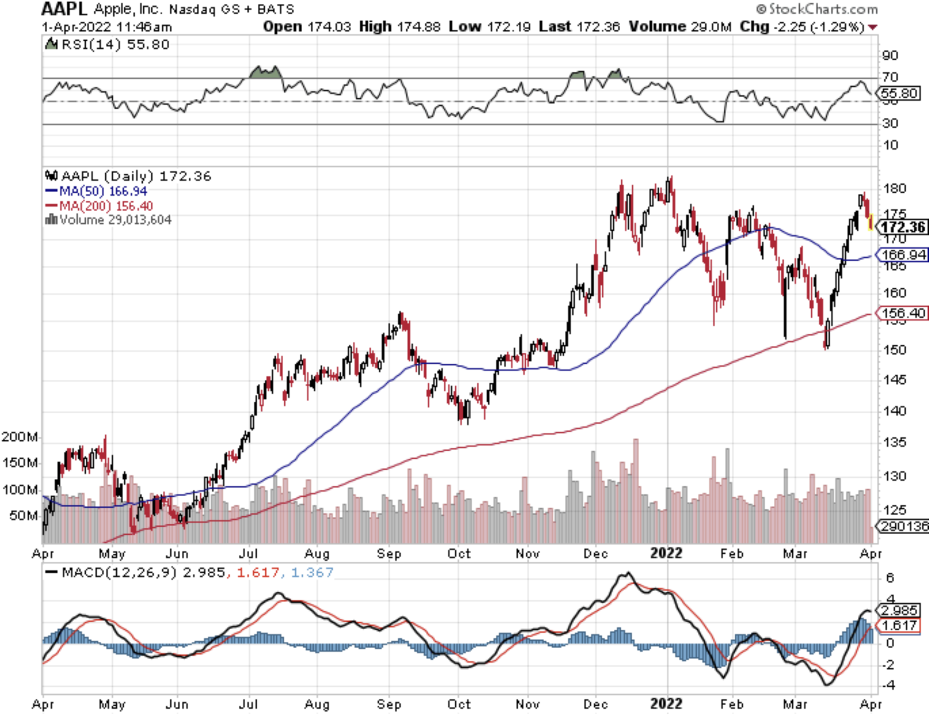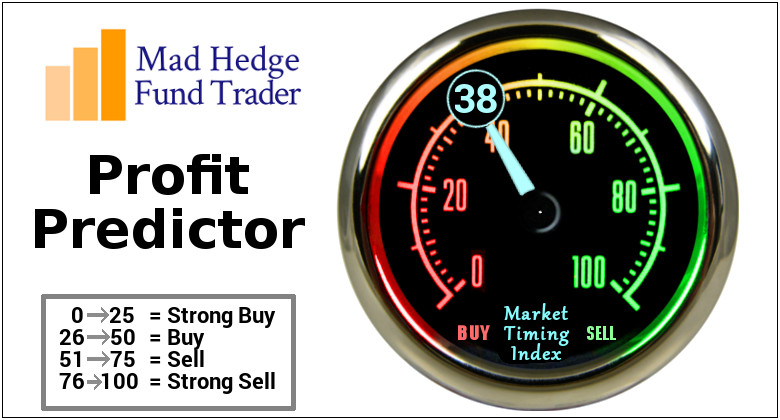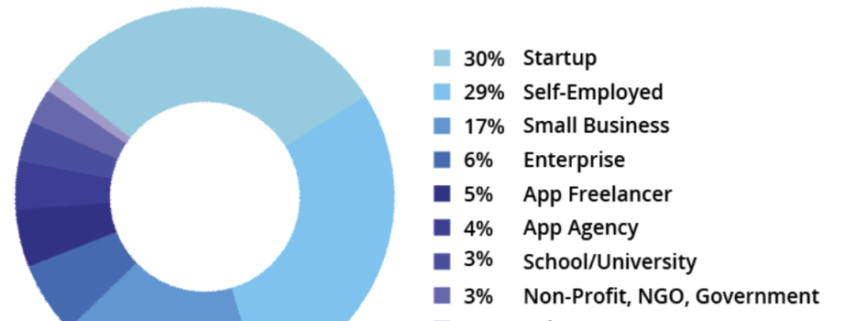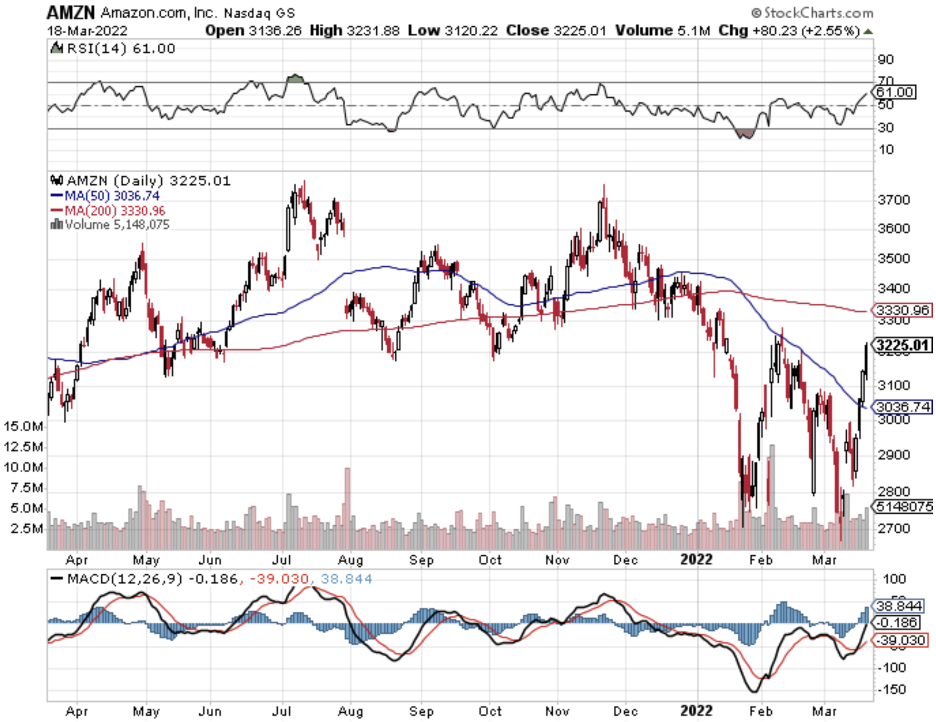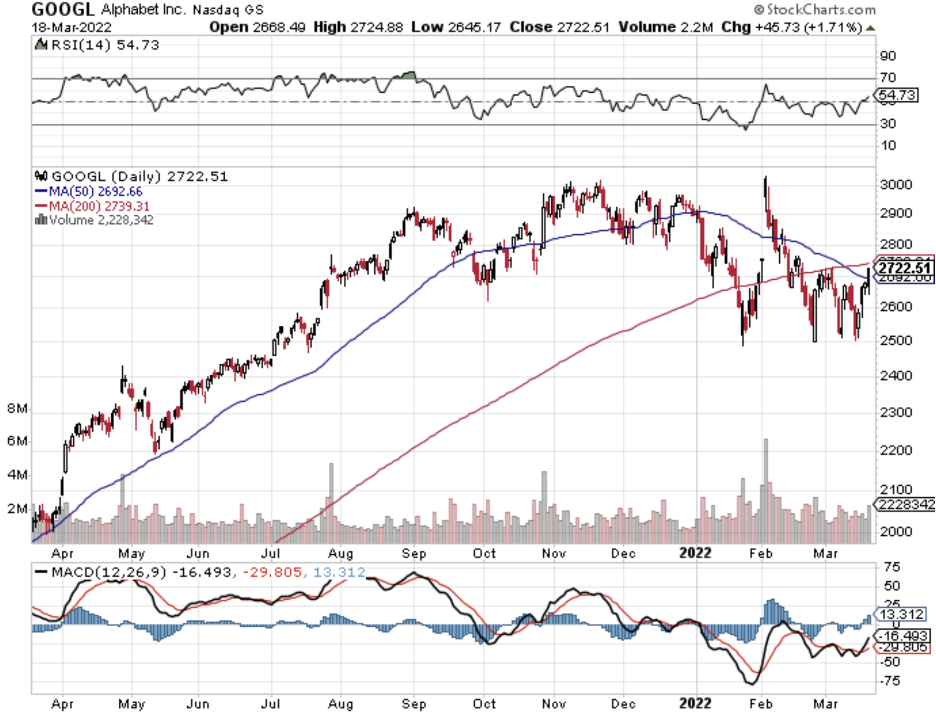My worst-case scenario for the S&P 500 this year was a dive of 20%. We are now off by 14%. And of course, most stocks are down a lot more than that.
Which means that we are getting close to the tag ends of this move. The kind of wild, daily 1,000-point move up and down we saw last week is typical of market bottoms.
Some $7 trillion in market capitalization lost this year. That means we could be down $10 trillion from a $50 trillion December high before this is all over. That’s a heck of a lot of wealth to disappear from the economy.
So, it may make sense to start scaling into the best quality names on the bad days in small pieces, like Apple (AAPL), Alphabet (GOOGL), Microsoft (MSFT), and NVIDIA (NVDA).
Whatever pain you may have to take what follows, the twofold to threefold gain that will follow over the next five years will make it well worth it. Is a 20% loss upfront worth a long-term gain of 200%? For most people, it is.
Bonds may also be reaching the swan song for their move as well. The United States Treasury Bond Fund (TLT) at $113 has already lost a gobsmacking $42 since the November $155 high.
The markets have already done much of the Fed’s work for it, discounting 200 basis points of an anticipated 350 basis points in rate rises in this cycle. Therefore, I wouldn’t get too cutesy piling on new bond shorts here just because it worked for five months.
Yes, there is another assured 50 basis point rise in six weeks towards the end of June. Jay Powell has effectively written that in stone. We might as well twiddle our fingers and keep playing the ranges until then. We have in effect been sent to the trading leper colony.
The barbarous relic (GLD) seems to be looking better by the day. Q1 saw a massive 551 metric tonnes equivalent pour into gold ETF equivalents, an increase of 203%. Of course, we already know of the step-up in Russian and Chinese demand to defeat western sanctions.
But the yellow metal is also drawing more traditional investment demand. Gold usually does poorly during rising interest rates. This time, it's different. An inflation rate of 8.5% minus an overnight Fed rate of 1.0%, leaving a real inflation rate of negative -7.5%. That means gold has 7.5% yield advantage over cash equivalents.
Gold’s day as an inflation hedge is back!
The April Nonfarm Payroll Report came in near-perfect at 459,000, holding the headline Unemployment Rate at 3.5%. It’s proof that a recession is nowhere near the horizon. A record 2 million workers have recovered jobs during the last four months and 6.6 million over the past 12.
Warren Buffet is Buying Stocks, some $51 billion in Q1. That includes $26 billion into California energy major Chevron (CVX), followed by a big bet on Occidental Petroleum (OXY). These are clearly a bet that oil will remain high for at least five more years. That has whittled his cash position down from $147 billion to only $106 billion. Buffet likes to keep a spare $100 billion on hand so he can take over a big cap at any time. Warren clearly eats his own cooking, buying $26 billion worth of his own stock in 2021. If you can’t afford the lofty $4,773 price for the “A” shares, try the “B” shares at $322.83, which also offer listed options on NASDAQ and in which Mad Hedge Fund Trader currently has a long position.
Elon Musk Crashes His Own Stock, selling $8.4 billion worth last week. His Twitter purchase has already been fully financed, so what else is he going to buy. The move generates a massive Federal tax bill, but Texas, his new residence, is a tax-free state. It continues a long-term trend of billionaires piling fortunes in high tax states, like Jeff Bezos in Washington, and then realizing the gains in tax-free states.
Adjustable-Rate Mortgages are Booming, replacing traditional 30-year fixed-rate mortgage at a rapid pace. Interest rates are 20% lower, but if rates skyrocket to double digits or more in five years, you have a really big problem. ARMs essentially take the interest rate risk off the backs of the lenders and place it firmly on the shoulders of the borrowers.
Travel Stocks are On Fire, with all areas showing the hottest numbers in history. Average daily hotel rates are up 20% YOY, stayed room nights 52%, airfares 39%, and airline tickets sold 48%. Expect these numbers to improve going into the summer.
JOLTS Hits a Record High, with 11.55 million job openings in March, up 205,000 on the month. There are now 5.6 million more jobs than people looking for them. No sign of a recession here. It augurs for a hot Nonfarm Payroll report on Friday.
Natural Gas Soars by 9% in Europe as the continent tries to wean itself off Russian supplies. In the meantime, US producers are refusing to boost output for a commodity that may drop by half in a year, as it has done countless times in the past. If the oil majors are avoiding risk here, maybe you should too.
My Ten-Year View
When we come out the other side of pandemic, we will be perfectly poised to launch into my new American Golden Age, or the next Roaring Twenties. With interest rates still historically cheap, oil peaking out soon, and technology hyper accelerating, there will be no reason not to. The Dow Average will rise by 800% to 240,000 or more in the coming decade. The America coming out the other side of the pandemic will be far more efficient and profitable than the old. Dow 240,000 here we come!
With some of the greatest market volatility seen since 1987, my May month-to-date performance lost 4.27%. My 2022 year-to-date performance retreated to 25.91%. The Dow Average is down -9.3% so far in 2022. It is the greatest outperformance on an index since Mad Hedge Fund Trader started 14 years ago. My trailing one-year return maintains a sky-high 56.62%.
On the next capitulation selloff day, which might come with the April Q1 earnings reports, I’ll be adding long positions in technology, banks, and biotech. I am currently in a rare 50% cash position awaiting the next ideal entry point.
That brings my 13-year total return to 538.47%, some 2.30 times the S&P 500 (SPX) over the same period. My average annualized return has ratcheted up to 43.36%, easily the highest in the industry.
We need to keep an eye on the number of US Coronavirus cases at 81.9 million, up 500,000 in a week, and deaths topping 998,000 and have only increased by 5,000 in the past week. You can find the data here.
The coming week is a big one for jobs reports.
On Monday, May 9 at 8:00 AM EST, US Consumer Inflation Expectations are released.
On Tuesday, May 10 at 7:00 AM, the NFIB Business Optimism Index is confirmed.
On Wednesday, May 11 at 8:30 AM, the Core Inflation Rate for April is printed.
On Thursday, May 12 at 8:30 AM, Weekly Jobless Claims are disclosed. Conoco Phillips (COP) reports. We also get the Producer Price Index.
On Friday, May 13 at 8:30 AM, the University of Michigan Consumer Price Index for May is disclosed. At 2:00 PM, the Baker Hughes Oil Rig Count is out.
As for me, not just anybody is allowed to fly in Hawaii. You have to undergo special training and obtain a license endorsement to cope with the Aloha State’s many aviation challenges.
You have to learn how to fly around an erupting volcano, as it can swing your compass by 30 degrees. You must master the fine art of getting hit by a wave on takeoff since it will bend your wingtips forward. And you’re not allowed to harass pods of migrating humpback whales, a sight I will never forget.
Traveling interisland can be highly embarrassing when pronouncing reporting points that have 16 vowels. And better make sure your navigation is good. Once a plane ditched interisland and the crew was found months later off the coast of Australia. Many are never heard from again.
And when landing on the Navy base at Ford Island, you were told to do so lightly, as they still hadn’t found all the bombs the Japanese had dropped during their Pearl Harbor attack.
You are also informed that there is one airfield on the north shore of Molokai you can never land at unless you have the written permission from the Hawaii Department of Public Health. I asked why and was told that it was the last leper colony in the United States.
My interest piqued, the next day found me at the government agency with application in hand. I still carried my UCLA ID which described me as a DNA researcher which did the trick.
When I read my flight clearance to the controller at Honolulu International Airport, he blanched, asking if a had authorization. I answered that yes, I did, I really was headed to the dreaded Kalaupapa Airport, the Airport of no Return.
Getting into Kalaupapa is no mean feat. You have to follow the north coast of Molokai, a 3,000-foot-high series of vertical cliffs punctuated by spectacular waterfalls. Then you have to cut your engine and dive for the runway in order to land into the wind. You can only do this on clear days, as the airport has no navigational aids. The crosswind is horrific.
If you don’t have a plane, it is a 20-mile hike down a slippery trail to get into the leper colony. It wasn’t always so easy.
During the 19th century, Hawaiians were terrified of leprosy, believing it caused the horrifying loss of appendages, like fingers, toes, and noses, leaving bloody open wounds. So, King Kamehameha I exiled them to Kalaupapa, the most isolated place in the Pacific.
Sailing ships were too scared to dock. They simply threw their passengers overboard and forced them to swim for it. Once on the beach, they were beaten a clubbed for their positions. Many starved.
Leprosy was once thought to be the result of sinning or infidelity. In 1873, Dr. Gerhard Henrik Armauer Hansen of Norway was the first person to identify the germ that causes leprosy, the Mycobacterium leprae.
Thereafter, it became known as Hanson’s Disease. A multidrug treatment that arrested the disease, but never cured it, did not become available until 1981.
Leprosy doesn’t actually cause appendages to drop off as once feared. Instead, it deadens the nerves and then rats eat the fingers, toes, and noses of the sufferers when they are sleeping. It can only be contracted through eating or drinking live bacteria.
When I taxied to the modest one-hut airport, I noticed a huge sign warning “Closed by the Department of Health.” As they so rarely get visitors, the mayor came out to greet me. I shook his hand but there was nothing there. He was missing three fingers.
He looked at me, smiled, and asked, “How did you know?”
I answered, “I studied it in college.”
He then proceeded to give me a personal tour of the colony. The first thing you notice is that there are cemeteries everywhere filled with thousands of wooden crosses. Death is the town’s main industry.
There are no jobs. Everyone lives on food stamps. A boat comes once a week from Oahu to resupply the commissary. The government stopped sending new lepers to the colony in 1969 and is just waiting for the existing population to die off before they close it down.
Needless to say, it is one of the most beautiful places on the planet.
The highlight of the day was a stop at Father Damien’s church, the 19th century Belgian catholic missionary who came to care for the lepers. He stayed until the disease claimed him and was later sainted. My late friend Robin Williams made a movie about him but it was never released to the public.
The mayor invited me to stay for lunch, but I said I would pass. I had to take off from Kalaupapa before the winds shifted.
It was an experience I will never forget.
Stay Healthy,
John Thomas
CEO & Publisher
The Diary of a Mad Hedge Fund Trader





